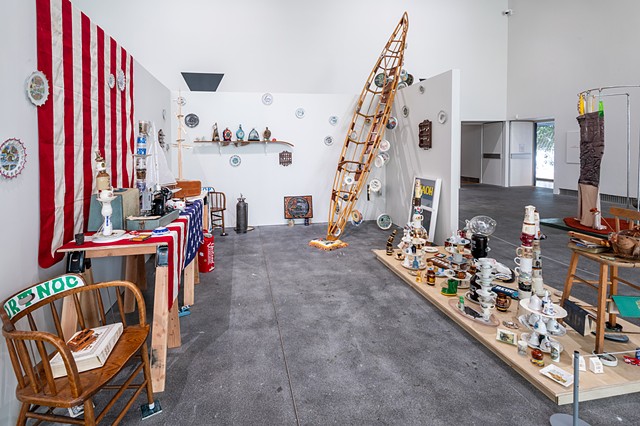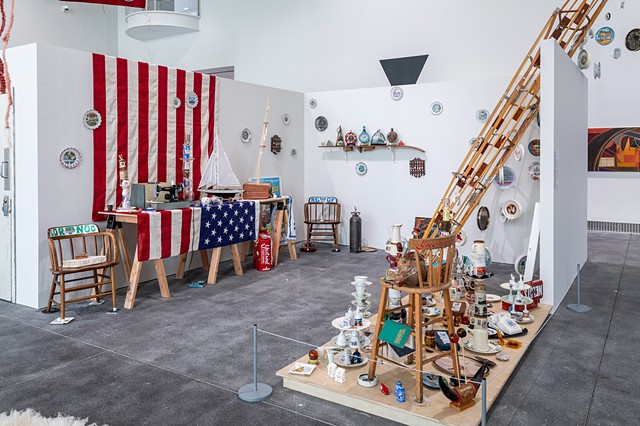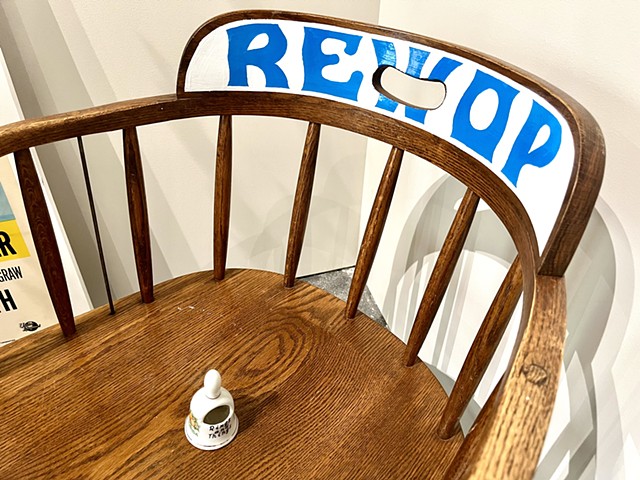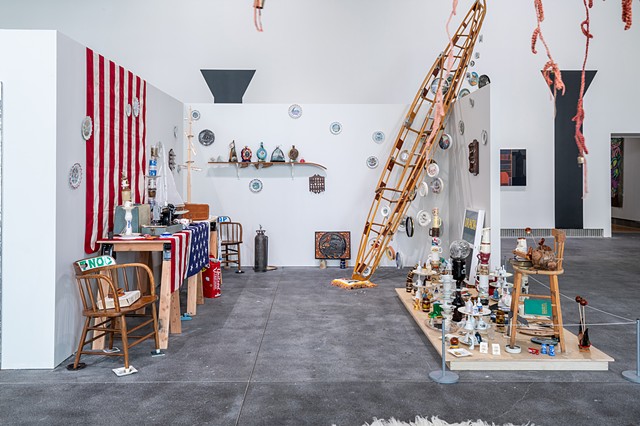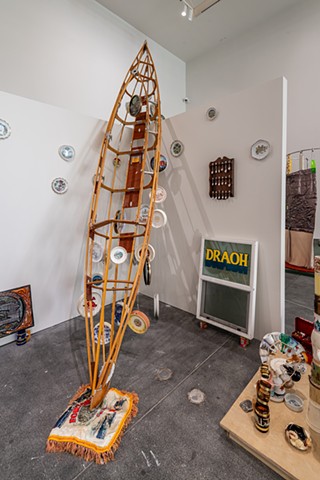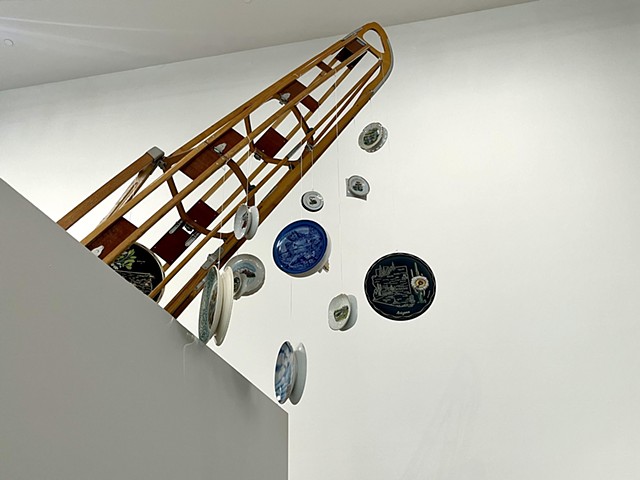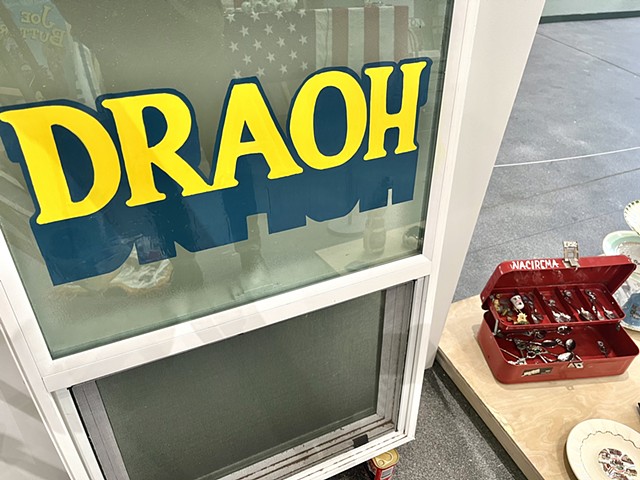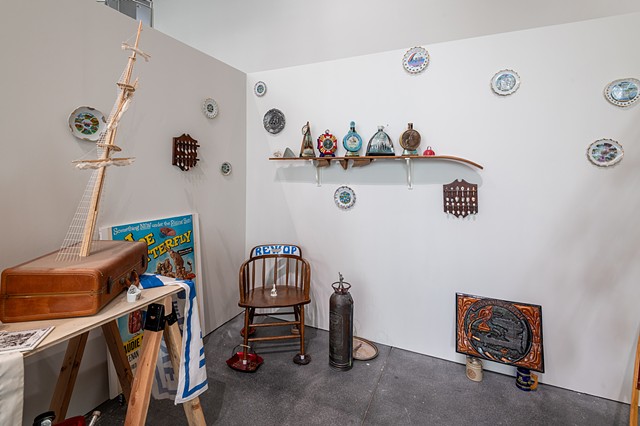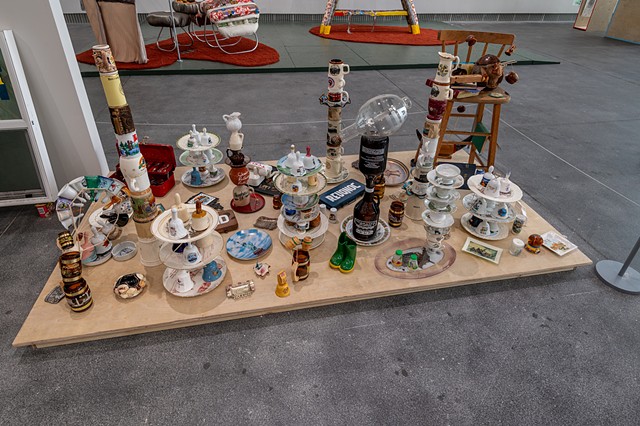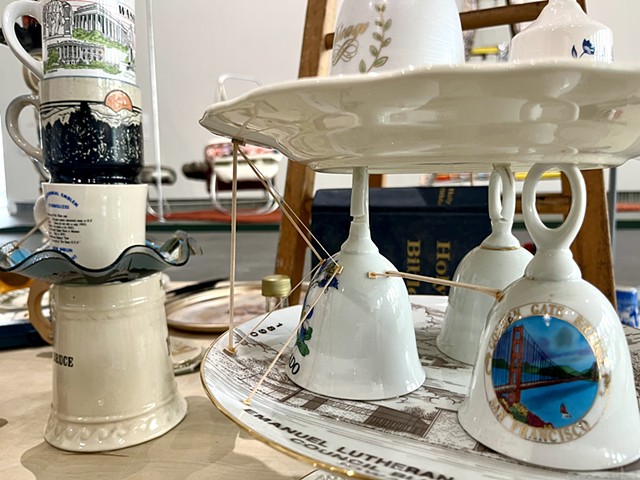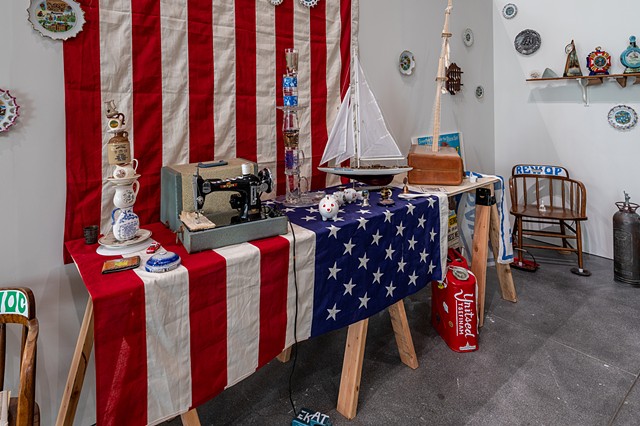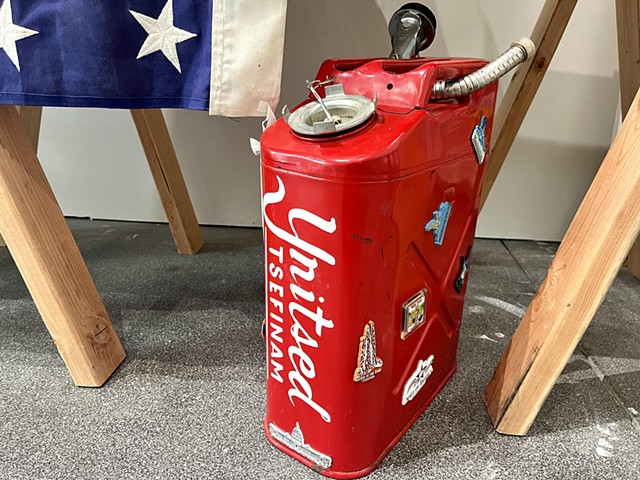Trophy Room
Trophy Room, 2023
Previously owned items collected from North America, enamel paint, wood, and Spam
[Installation views of Bay Area Now 9. Courtesy Yerba Buena Center for the Arts, San Francisco. Photographs by Charlie Villyard]
Michael Arcega’s practice reflects a profound exploration of identity, history, and language, stemming from his perspective of a Filipino immigrant raised in California. His work delves into the complexities of his dual cultural identity and historical narratives of colonization of the Philippines by Spain and the United States. Arcega engages with the Pacific Ocean as a symbol of distance—both as a spatial stretch and a historical context— in seeking to understand the personal and political dimensions of existence in diverse landscapes.
Trophy Room serves as a portrait of the Nacirema/American culture. The installation is informed by parallels between the European Wunderkammern and the American yard sale display. This artwork also combines two synchronous narratives. The first centers language, Arcega employs sign-painting techniques and wordplay reminiscent of his graffiti and cultural roots. Words and phrases are carefully reversed, creating an unfamiliar visual language that upends viewer's perceptions of the familiar text. This linguistic endeavor reflects Arcega’s ongoing work to redefine and reclaim language in the context of identity and cultural background. The second narrative involves Nacirema objects collected since 2011, as part of the BABY- Corps of Re-Discovery, precariously stacked and arranged to symbolize the fragility and complexity of national identities. It puts into question notions of ownership, naming and commemorating as a way to concretize a national narrative.
Taken as a whole, the installation challenges preconceived notions of identity, history, and language, inviting a deeper understanding of the artist's perspective as an outsider navigating the complex tapestry of the United States.
